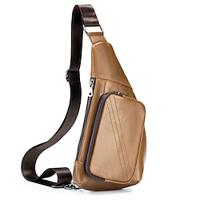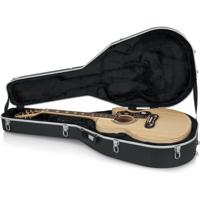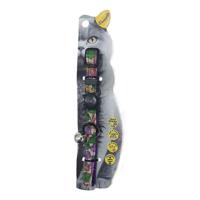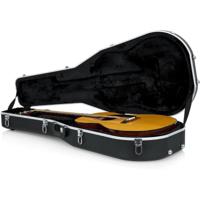About Instrument Covers
If you purchased an instrument without a case, then you should get a proper instrument case to make sure that the expensive instrument that you invested quite a lot of money in stays safe without damages. So, read more about the instrument covers in the below paragraphs .
The primary means of protecting any instrument is to keep it in a good quality case. Despite that, you might not get a proper protective case when you are buying the instrument. This is especially true if you are going for budget or middle-range instruments. But one should take good care of the instrument regardless of how much it costs to ensure proper working. This article will tell you everything you need to know about instrument covers. Having a better understanding of them will help you make the right choices when you are purchasing a case.
Different types of instrument cases
Seeing the new instrument that you ordered online arrive at your doorstep is without a doubt an exhilarating moment. But when the euphoria takes over, we often forget that these instruments are delicate and fragile. Moreover, very expensive. If you want your instruments to stay in good shape and work seamlessly for a long time, you should also have an instrument cover for them. Here is a list of four different types of instrument covers that you can get. You will also find some really useful tips that will help you when you are shopping for them.
Soft cases
Generally, soft cases do not offer much protection to your instrument. Although it will cover the instrument from dust and occasional splashes of water, that is the most it can do. But some of them will have light padding to avoid damage if you happen to hit something solid. However, the primary reason for using a soft instrument cover is to make it easier to carry the instrument. These cases come with a carrying handle and a backstrap. Because the case itself does not add much weight to the whole thing, it is possible to carry your instrument around your back using a soft case.
Hard cases
There are hard cases made of wood and others made of plastic, carbon fibre, or fibreglass materials. Not surprisingly, hard instrument covers are hard and protect the instruments from mechanical damages. All of these cases come with foam cushioning with cutouts that fit the instruments. So, the instrument will stay safe inside the case even if somebody tosses it in the back of a car or a truck. Because of this, this is the best case for transporting the instruments over a long distance. Even though cases like this are more expensive, they are really durable and can last for decades.
Flight cases
Technically, flight cases are just another type of hard instrument cover. But in this case, it is a case that is specifically approved by the aviation authorities for flying. So, if you want to fly the instruments, you need to use this case. Airlines can refuse to check in the instrument if you are using a regular hard case. But most of the criteria laid out by the aviation authority are for the protection of the instruments themselves. The requirements for a case to get ATA certification include that it should survive a drop from a height of three feet and vibrations and stress inside the cargo compartment of an aircraft.
Hybrid cases
Cases like this combine the benefit of both hard cases and soft cases. The exterior of these instrument covers will be lightweight and soft. But to make sure that the instrument is protected. There will be a strong frame and thick foam padding with a cut out for the instrument. If you want a case that offers decent protection but is also easy to carry around and lightweight, a hybrid case is the best option. Just like soft cases, hybrid cases also come with adjustable back straps. But the quality and durability of these cases depend a lot on the material.
Tips on how to buy Instrument Cases
Cases are the primary means of protecting any instrument. But finding the right case for it can be harder than you might think. This gets even harder if you are buying it for the first time. Cases come in a variety of different price ranges with whole different sets of features. If you want to be able to find the right one for your instrument, you should know what criteria to consider. Here are a few tips that you can follow while shopping for instrument cases.
- Type of instrument – The cut out inside the case has to fit the shape of the instrument. Even though it is okay to some slight difference between the shape of the cut-out and the instrument, it should not be to a significant extent. For example, there is no way you can fit a guitar into a banjo case.
- Size – Just like the sizes of the instruments vary, the instrument cases also come in a variety of different sizes. The size of the interior compartment should offer an exact fit for the instrument. Don’t buy a case that is too large for the instrument just because you found an enticing price tag on a sale.
- External material and padding – The material on the outside and inside of the case determines the physical properties of the case. While hard cases offer very good protection for the instrument, they are heavy and hard to carry around. If you want to be able to walk while carrying the instrument in a case around your back, a soft case is a great option. Hybrid cases can offer a decent amount of protection while being lightweight.
- Accessory compartments – If you are buying a case for your instrument, make sure that it also has enough space to store all the accessories that you use with that instrument. As you are already spending money on a case, it is better to go for the case with enough storage space for the accessories as well. Otherwise, you will have to buy separate cases for the accessories and end up paying more.
There are a few other musical instrument accessories that might help you besides instrument cases. These include effect processors, guitar elements, grip masters, instrument cleaners, instrument stands, instrument amplifiers, keyboard benches, clamps, metronomes and microphone stand. You can find all of them easily by using our shopping search engine . It will also let you compare the prices and features of different instruments and pick the right one among them. Also, don’t forget to check out other amazing products in the musical instruments category from brands like like Fender, Yamaha, Gibson, Ibanez, Martin, and Epiphone.
Question & Answer
What are instrument cases made of?
Not all guitar cases are made of the same material. The material depends primarily on the type of case. Nylon is the most common material for soft cases, as they are durable and lightweight. Hard cases have to be sturdy enough to protect the case while keeping the weight to a minimum. Low density EPS foam is commonly found as the soft interior material as it can absorb shocks and vibrations fairly well. Flight cases use a special type of ATA certified material that can survive heavy impacts and drops from a height of up to three feet.
How to find a guitar case of the right size?
You have to consider five different things to find a guitar case that fits perfectly. The more apparent ones are the overall length of the guitar and the lower bout. These two factors determine how big the case is going to be from the outside. All the remaining factors are to help you find the cut out of the right size. These measurements include the upper bout, waist, and the distance between the neck and headstock of the guitar. This gets even more complicated when it comes to modern electric guitars as they come in varied shapes.
Are hard cases better than soft cases?
When you consider the protection that the case provides the instrument, hard cases are always better than soft ones. So, if you want to store the instrument or transport it in a truck or freight, there is no better option than a hard case. But the downside is that you cannot carry a hard case with the instrument inside it and walk around for more than a few hundred metres. It will be quite heavy and awkward to carry around. In that case, you need a soft case regardless of how little mechanical protection it gives.













